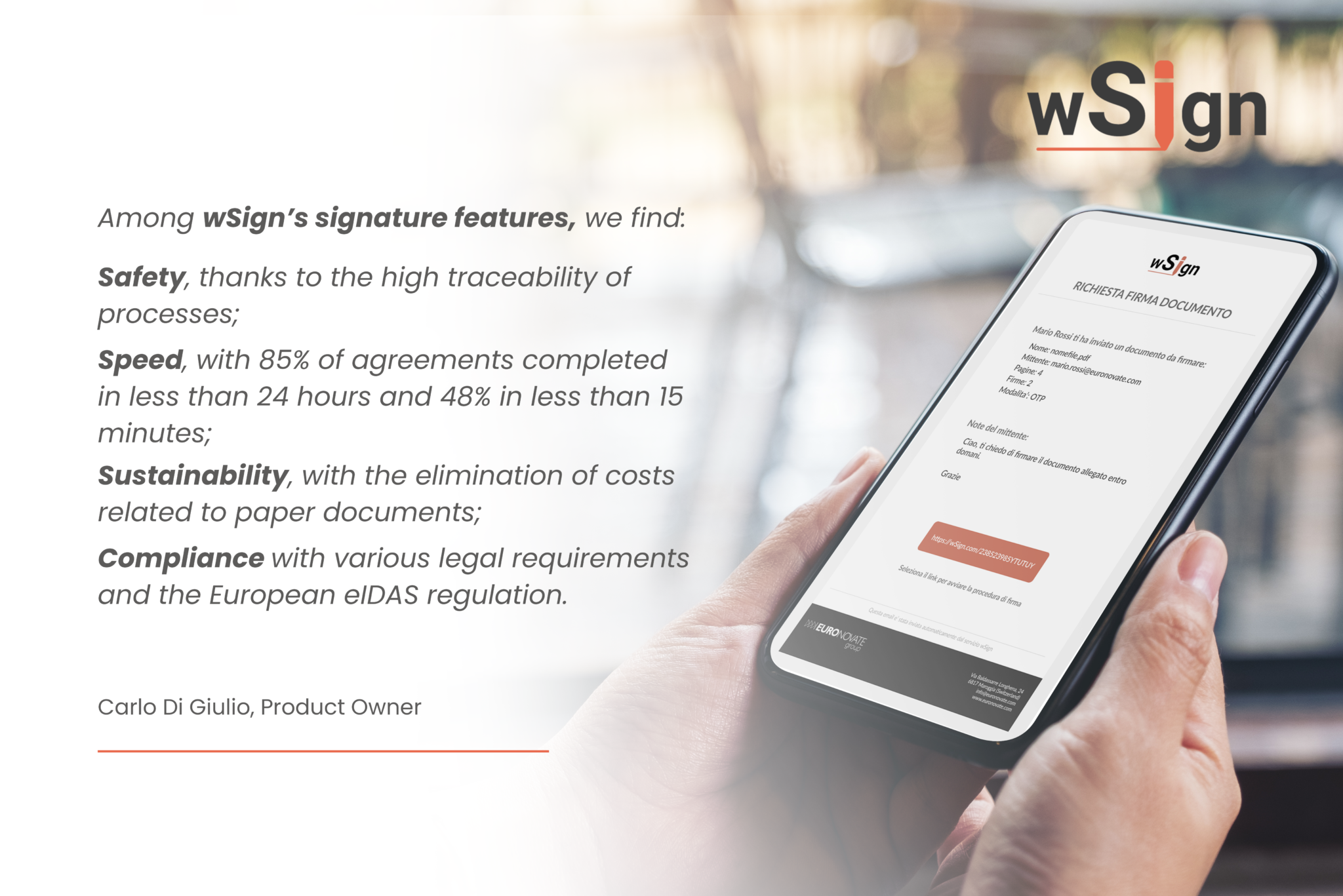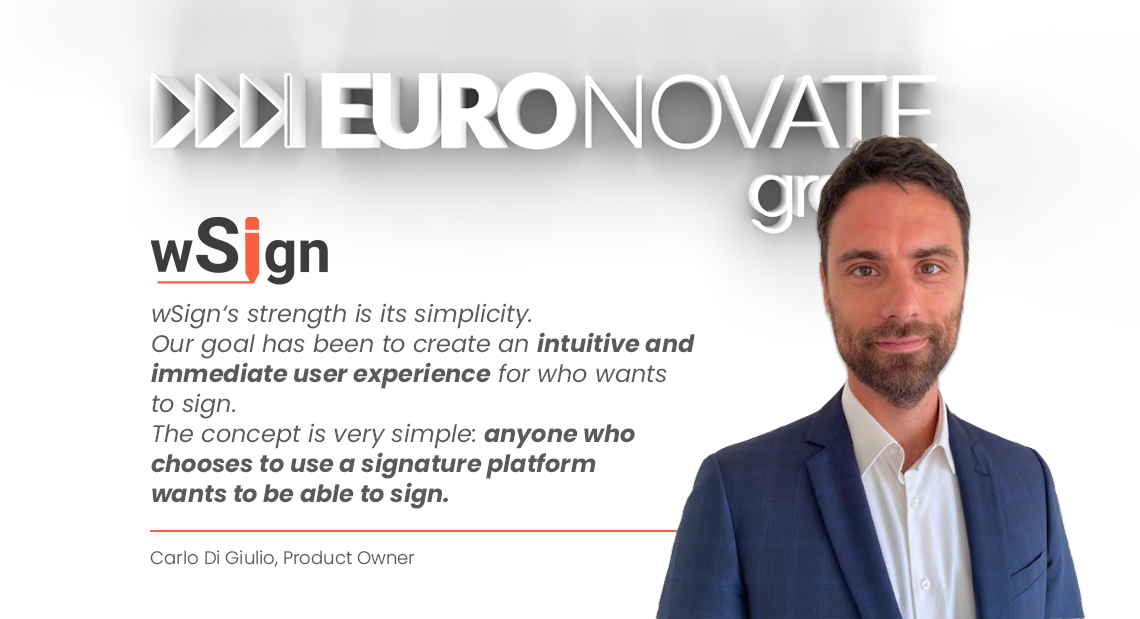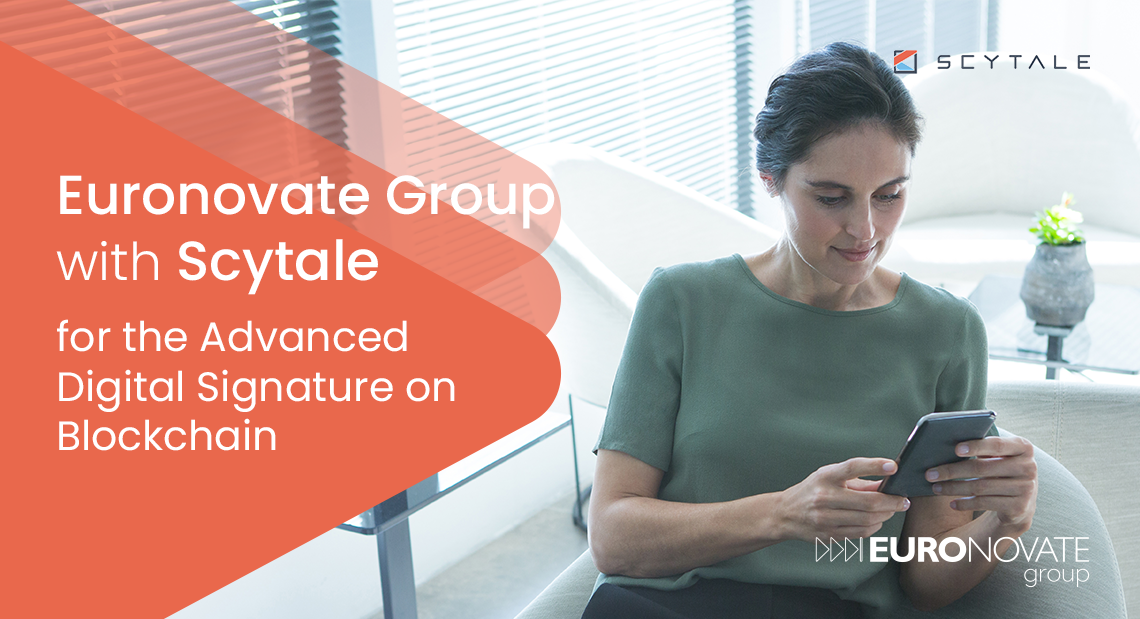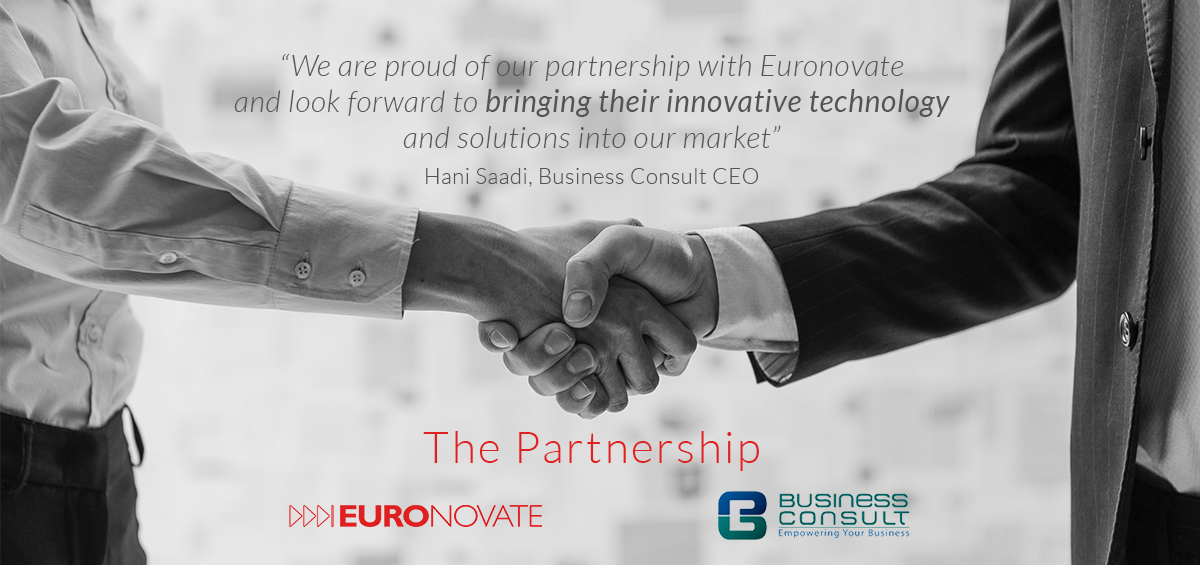

Electronic signature, interview with Carlo Di Giulio
Home / Press Releases - Euronovate Group / Electronic signature, interview with Carlo Di Giulio
Interview by Daniele Preda published in techFromTheNet, 07/07/2022
Carlo Di Giulio, wSign Product Owner, talks about Electronic Signature and the benefits of modern tools for digital business
What benefits can Electronic Signature use bring?
The electronic signature is a consolidated reality, both at a regulatory level and in daily use, especially in the professional sphere. After several years from its appearance in Italy, and many steps forward also made at European level since the first Directive of 1999, I do not think there are any doubts about its validity or usefulness. Yet, although the resistance to its implementation has been eliminated and the benefits of adopting it are evident in both the public and private sectors, many subjects still delay adopting it as a tool for dematerialization in their business.
This is, on one hand, due to the lack of convenient platforms to initiate dematerialization projects. Many are accessible only through complex projects or financially justifiable eventually. On the other hand, there is a lack of simple tools which are a step forward compared to signing on paper with all the benefits of digitization, without however burdening the signature process unnecessarily. We are convinced that this is a decisive moment to finally promote extensive use of the electronic signature when technology allows it and the global situation requires it. In this sense, the crisis represented by the pandemic of the past two years has opened the eyes of many. Just remember the surge in the use of SPID, which is now close to 31 million users. We have the means; we have the culture. What is lacking in the qualitative leap is perhaps an adequate tool.
How does wSign deal with the new scenarios of innovation and regulatory evolution?
Undoubtedly, essential innovations are arriving in the world of digital identity and electronic signatures. This allows us to gather new opportunities and leverage possibilities that we did not previously contemplate. Think of the Digital Wallet concept for managing identity attributes with eIDAS 2. Innovations like this allow us to expand the number of available use cases in a future scenario of interoperability and compatibility between different identity management tools, authentication, or signature. In this sense, wSign aligns with existing international standards and looks favorably at the new global regulatory scenarios. We are continuously working on adding new features and possibilities with various innovations arriving at the platform that travel in line with European and, why not, global evolution in the world of signatures and digital identity.
On the other hand, the legislation supports or attempts to organize the use of innovative and, in some cases, disruptive technological tools. The blockchain can be one of these, now used as a reference tool for traceability in many sectors, including that of digital identities. In this sense, wSign entirely bases its reporting and traceability system on full compatibility with blockchain systems, adopting a format built in collaboration with partners (academic or technological ones) to be easily exportable on distributed ledger, at the request of customer organizations who wish to adopt, or have already adopted, this technology.
What is the strength of wSign in the panorama of current electronic signature solutions?
The strength of wSign is its simplicity. From the beginning, our goal has been to create an intuitive and immediate experience for users who want to sign, taking inspiration first and foremost from the experience of Euronovate in contact with its customers. The concept is simple: anyone who chooses to use a signature platform wishes to be able to sign.
Everything else, such as the creation of an approval flow, or the choice of informed signatories or recipients, are aspects that must address in a secondary step. Other solutions on the market highlight the complexity of the flow, giving the possibility to select between multiple options but slowing down significantly the experience for those who simply want to sign, making the signature on paper almost more immediate. By reversing the perspective, we have made the signer return to the center to make the signing experience more natural and quick.
At the same time, wSign does not eliminate those features that represent the advantage of using a digital platform: the automation of approval flows, the flexibility in choosing the type of authorization for signing, the ability to enter an expiration date to the request for a signature, these are all possibilities open to the user who requires complexity, all starting from viewing the document, just as one would do with a paper document.
RELATED BLOG POSTS



Jordanian Business Consult, Euronovate's new partner in the Middle East
Amman, September 2021
